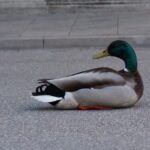The Best of the Grammar Diva….
Which, that and who. These are pronouns that are often confused.

We aren’t talking about sentences like these:
- Which of these toys are yours?
- That book is mine
- Who is that girl?
We’re talking about sentences like these:
- I am taking the flight that leaves at midnight.
- My boss, who is a great athlete, plays tennis every day.
- That green dress, which was on sale, matches my eyes.
In the second list of sentences, that, which, and who function as a special type of pronoun (relative pronoun). These pronouns begin clauses (groups of words with a subject and a verb) that generally describe a noun.
- (I am taking the flight) that leaves at midnight – describes flight.
- (My boss) who is a great athlete – describes boss.
- (That green dress) which was on sale – describes dress.
Some of the “rules” pertaining to that, which, and who are pretty black and white; others are grayer.
Black and white:
- Which and that are used for things and animals.
- Who is used for people and animals with names.
- Which is used for nonessential, or nonrestrictive, clauses; that is used for essential, or restrictive, clauses.
- Commas are used around nonessential clauses (which).
Gray:
- Sometimes you can leave out that. When?
- Sometimes you can use that with people. When?
Rule #1 Black and White: Use which for nonessential (nonrestrictive) clauses and that with essential (restrictive) clauses.
A nonessential (nonrestrictive) clause is added information that does not affect the meaning of the sentence. These clauses begin with which (or who) and are enclosed in commas. An essential, or restrictive, clause is necessary to the meaning of the sentence and begins with that without any commas.
- My twin sister, who is good at math, helps me with homework all the time. You don’t really need the words inside the comma. We already know we are talking about your twin sister, of whom there is only one.
- My sister who is good at math helps me with homework all the time. Here, the lack of commas implies that you might have more than one sister, and we are talking about the sister who is good in math. The clause is essential, or restrictive, here. You are defining which sister you are talking about.
- The Hobbit, which I have read three times, is also a movie. Here, the fact that you have read it three times is extra information and not necessary to the meaning of the sentence.
- The book that is on the front desk is mine. Here, you need the clause that is on the front desk to identify the book you are talking about. It restricts the book to the one on the front desk.
Rule #2 Black and White: Use that and which for things, and who for people and animals with names.
- The girl who always sits in the back of the room is my best friend.
- The cat that is sitting on the ledge belongs to my neighbor.
- Moe, who is my bulldog, is four years old.
- That dog, which is a chihuahua, has been at the shelter for months. (Actually this is kind of gray. No one will mind if you call this dog a who.)
Shades of Gray
Sometimes you can leave that out of your essential (restrictive) clause:
1.Usually after a form of the verb say: He said (that) he was going to Europe.
But you can’t do that if there is a time difference between now and when it was said:
- The teacher said on Wednesday we will have a test. You need that.
Does this mean
- The teacher said that on Wednesday we will have a test.
- The teacher said on Wednesday that we will have a test.
When you put that in, whichever one you mean becomes clear. Without that, it is ambiguous.
2. That is usually good to use after certain verbs including (but not limited to) declare, estimate, contend, point out, propose, state:
- I declare that there is a problem.
- I estimate that the chair is four feet wide.
- She contends that she was here early.
- I would like to point out that you have chores to do.
- She proposed that a new rule be adopted.
- He stated that he did nothing wrong.
3. It is usually wise to use that before clauses that start with words like after, before, until, and while:
- She said that after they are finished, they will meet us.
- I know that before dinner she had been out shopping.
- She said that until she was in third grade she couldn’t read.
- He thought that while the game was on, he could take a nap.
Remember that it is always correct to leave that in. So when in doubt, use it.
Another Shade of Gray
Usually we use who for people. If you are talking about a type of people or an organization, you generally use that (or which). However, if you are really referring to the people inside the organization, you can use who.
- The tribes that are native to this area are listed here.
- The School Board that was just elected will meet tonight.
- The School Board, who has helped us out with our fundraisers many times, is here tonight.
A Final Thought
That doesn’t have a possessive, so weird as it might sound, use whose with people and things:
- The desk, whose drawers are missing, is being donated to the school.
- The dog, whose litter mates have all been adopted, needs a good home.



Hm-m . . . well, I must say that this was one is something I plan to stick to my forehead with glue when I write. (No joke! 🙂) I had one other comment, and that is the very last sentence of this blog: The dog, whose “other” litter mates have all been adopted, needs a good home. (I’m a dreadful push-over for the last, and lonely, little puppies–or kittens.)
Thanks, Arlene, for making this so clear!
Thanks for the comment.I am also a pushover for the last and lonely, even the last cookie on the plate!
This is a good one. Thanks, Arlene!
You’re welcome, Robin!
That was a great blog that left me wondering which one to use when referring to in-laws.
Hahahahahahah!